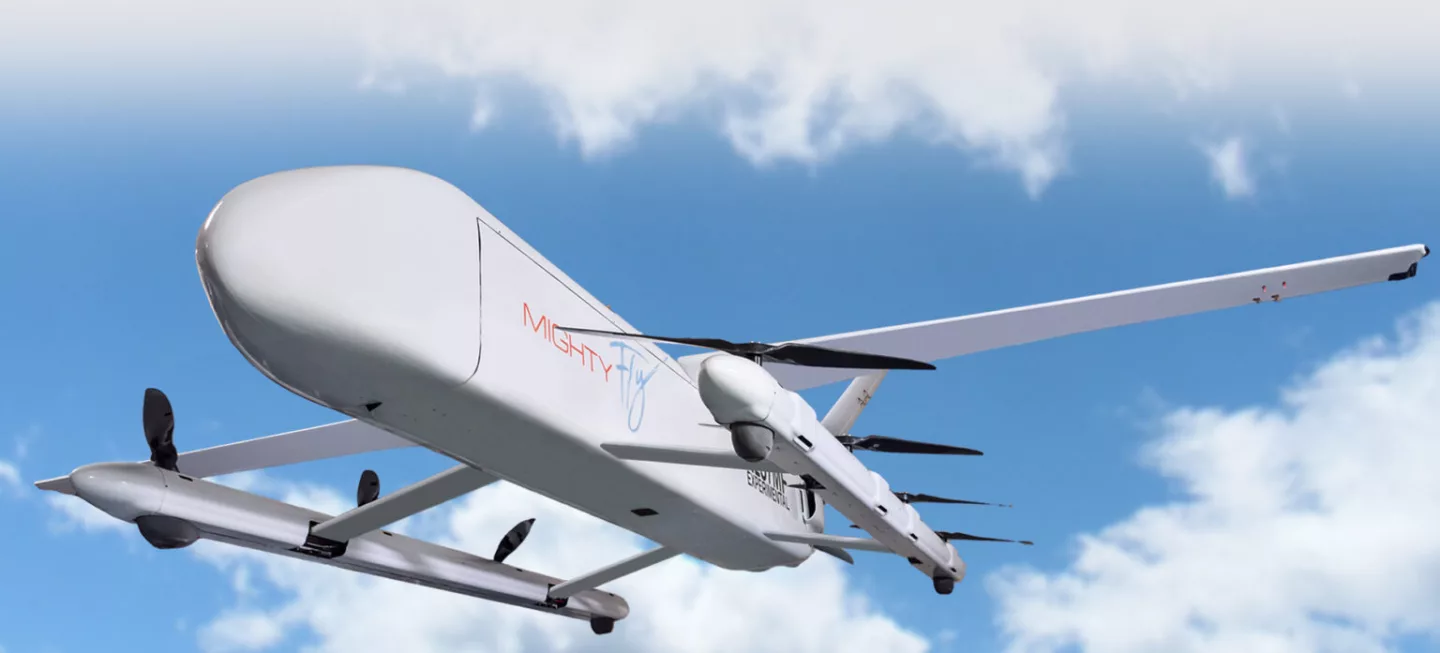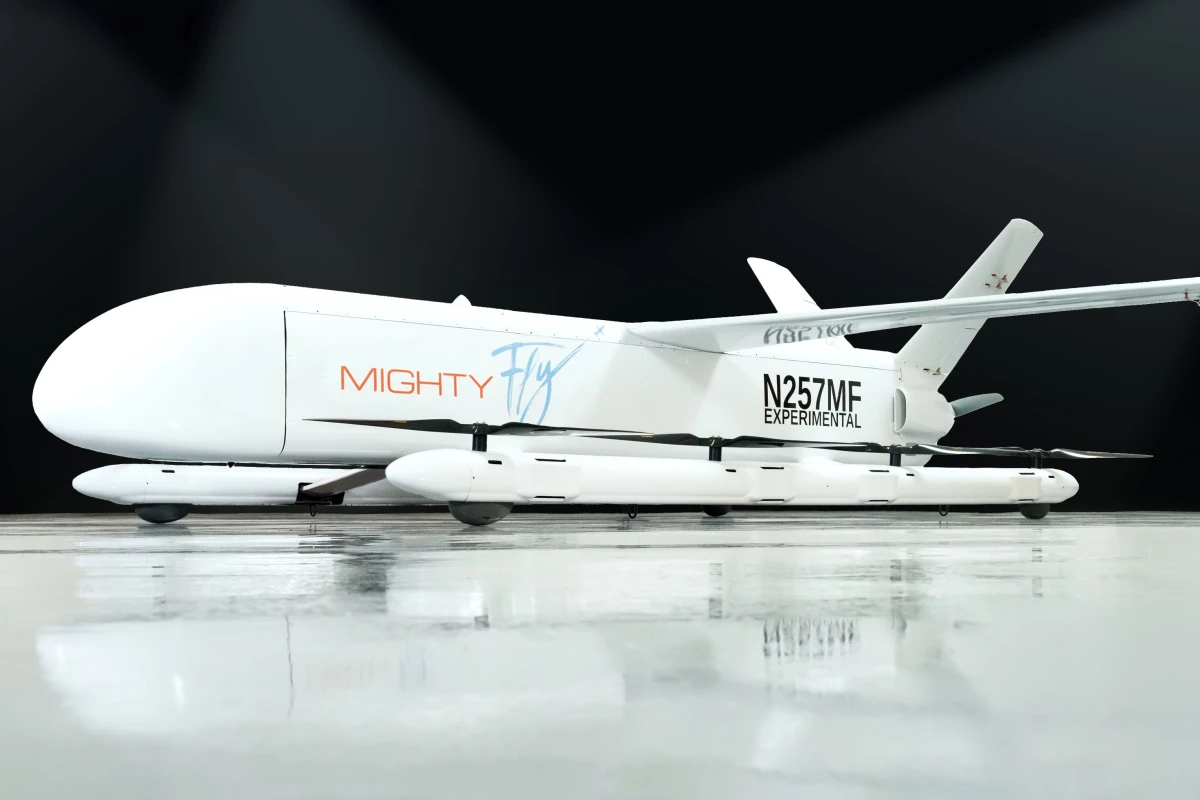Carrying up to 96 small USPS packages in its internal cargo bay, the new Cento needs nothing more than two parking spaces for takeoff, landing and automatic unloading. Bay Area company MightyFly is working with the FAA to expand its long-range flight authorization.
The Cento uses a large carbon-fiber airframe, weighing 355 lb (161 kg) when fully loaded up with a 100-lb (45-kg) payload. It's a simple lift and cruise design, using eight lift props mounted on propulsion pods that look a bit like landing skids, as well as a pusher prop on the back for efficient cruise flight, supported on high-mounted wings. As well as completely negating traffic, it covers distance at a max speed of 150 mph (240 km/h), making it much faster than road transport.
The key to its monster 600-mile (1,000-km) range is of course a long-endurance hybrid powertrain; all the propulsion is electric, but a combustion engine burns hydrocarbon fuel to keep the battery topped up during flight.
Its 13.1 ft by 16.7 ft (4 m by 5 m) footprint, says MightyFly, is smaller than two compact cars, so once it's in commercial operation, anyone that can rope off a couple of parking spaces, or another flat area that size, can accept deliveries or book pickups. Indeed, you don't even need to open the thing up; it'll deploy an autonomous conveyor belt from its cargo bay, so you can pick things up and drop them off very easily.

It's been in flight testing since December, says MightyFly. The FAA has granted the company a Special Airworthiness Certificate allowing flight testing, but not the ability to carry cargo in commercial operations at this stage. It's also granted a Certificate of Authorization that gives MightyFly a 230-sq-mi (596-sq-km) airspace and a 5,000-foot (1,500-m) altitude ceiling for testing the transition from hover to cruise. The company hopes it'll soon be able to demonstrate a 600-mile mission carrying a full 100 lb of cargo, which it says is an unprecedented feat.
It certainly seems like a kind of service companies will want to use, so when will these bottleneck-busting autonomous cargo drones start operating commercially? MightyFly isn't ready to hazard a guess at this stage, simply saying it's "seeking business partnerships for proof-of-concept delivery service operations" at some time "beyond 2023."

That's fair enough; you'd certainly expect any 350-lb object capable of flying itself to be thoroughly tested and proven before it's unleashed anywhere near the public. MightyFly says it's working on another machine to carry 500 lb (227 kg) of payload. You can hear the company's pitch and see the Cento in the video below.
Source: MightyFly







